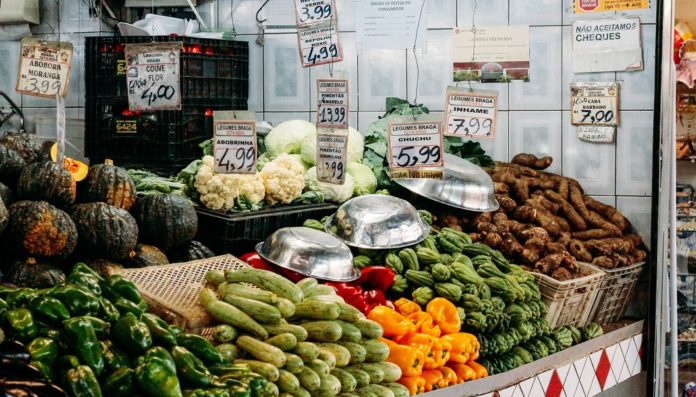South Africa faces a double burden of hunger and malnutrition, on the one hand, and obesity with associated non-communicable diseases (NCDs), on the other. In many countries, in both the global North and South, malnutrition and obesity frequently co-exist in the same people. This is a condition known as “hidden hunger”. By BRITTANY KESSELMAN.
Hidden hunger is a result of various factors. These include poverty, inequality, urbanisation and industrialisation of the food system. The interplay of these factors leaves low income households with very limited access to fresh, healthy foods. Instead, many South Africans – and other people living in similar conditions – subsist on diets high in sugar and processed starch. These diets contribute to increasing levels of obesity. But they don’t meet nutritional needs.
My research among urban farmers and low-income residents in Johannesburg identified the complexity of factors that influence dietary choices. It also identified the obstacles to accessing healthy food. Cost is a major impediment while physical access, nutritional knowledge, concentration in the food industry and dietary norms also played a role in shaping diets. Without addressing all of these, South Africa will be unable to address the double burden of malnutrition and non-communicable diseases (NCDs).
Despite the fact that diet has been a major contributing factor to the growth of NCDs in recent years there are virtually no connections between South Africa’s agricultural and health policies. Policies to address hunger and malnutrition have tended to be housed in the department of agriculture. They have focused on increasing production, whether through urban agriculture or support to small-scale farmers in rural areas.
For its part, the department of health remains confined to treatment with medication and limited advice – like diet and exercise. This is despite the fact that the department recognises there needs to be a multi-pronged approach to NCDs.
This needs to change. South African practitioners and policy makers could learn from international examples, where the public and private health sectors have begun to make the link between food and wellness. In particular, policies that were introduced a quarter of a century ago in a city in Brazil provide a useful template of what an integrated approach could look like.
Connecting the dots
Innovative policies and programmes in various countries are beginning to link food and health.
To draw a few examples from the United States, which faces high rates of obesity and NCDs, the new field of culinary medicine looks at how dietary changes can restore and maintain health. A number of hospitals are creating food gardens to serve healthy meals to patients. Doctors are writing scripts for fruits and vegetables so that patients can afford them.
At the same time, in the US and Canada, food banks and other organisations that combat hunger are attempting to distribute healthier foods. These organisations are also engaging in advocacy for a more just and equitable food system.
The link is also being made between the livelihoods of food producers and the environmental sustainability of the food system. In the US a non-governmental organisation incentivises recipients of the government’s food assistance programme, SNAP, to buy fresh produce at local farmers’ markets through a double value coupon programme. The UN’s Purchase from Africa for Africans Programme leverages public procurement for school meals to improve children’s health and education while supporting small-scale family farmers. It draws lessons from Brazil and has been implemented in five African countries.
The city of Belo Horizonte, Brazil provides a noteworthy example of how innovative, integrated food and nutrition security policies can assist communities. It has been implementing policies designed to ensure that residents are able to enjoy the right to food for the past 25 years. The city’s programmes include:
-
popular restaurants serving subsidised healthy meals;
-
shops selling subsidised fresh fruit and vegetables in under-served areas;
-
a food bank. This reduces food waste by rescuing food otherwise discarded by retailers. The food is then checked and provided to social programmes (such as crèches and old age homes);
-
farm stalls and farmers’ markets. These enable small-scale farmers to sell directly to consumers, cutting out the middleman and thereby raising incomes;
-
public procurement from small-scale farmers, especially those using agroecological production methods;
-
school lunches and school gardens. These ensure that children have access to nutritious meals and that they learn about food production and nutrition.
On a research visit to Belo Horizonte, I saw how these programmes improve access to fresh fruits and vegetables – a key measure in the fight against malnutrition and obesity.
They also support decent incomes for small-scale producers through direct market access and public procurement. In addition, environmentally sustainable production is encouraged through reservation of additional public funds to purchase agroecologically-farmed foods.
Beyond the health and economic benefits, the programmes support social cohesion through communal eating spaces, cultural events that feature local gastronomy, and local farmers’ markets where people can meet the farmers who grow their food and enjoy a sense of community.
One of the most remarkable aspects of Belo Horizonte’s food and nutrition security programme is its low cost: less than 2% of the city’s budget. Another is the degree of cooperation among government departments, as well as partnership with civil society organisations.
When the policies and programmes developed in Belo Horizonte were rolled out nationally, Brazil experienced a notable decline in hunger.
The model provides many useful lessons that could greatly benefit South Africa. The Department of Health, along with other government departments and civil society partners, needs to take a bold move to tackle the problems of malnutrition, obesity and associated NCDs through a multi-faceted approach.
Brittany Kesselman is a Postdoctoral Research Fellow at the University of the Witwatersrand
This article is republished from The Conversation under a Creative Commons license. Read the original article.
Featured image via Flickr









